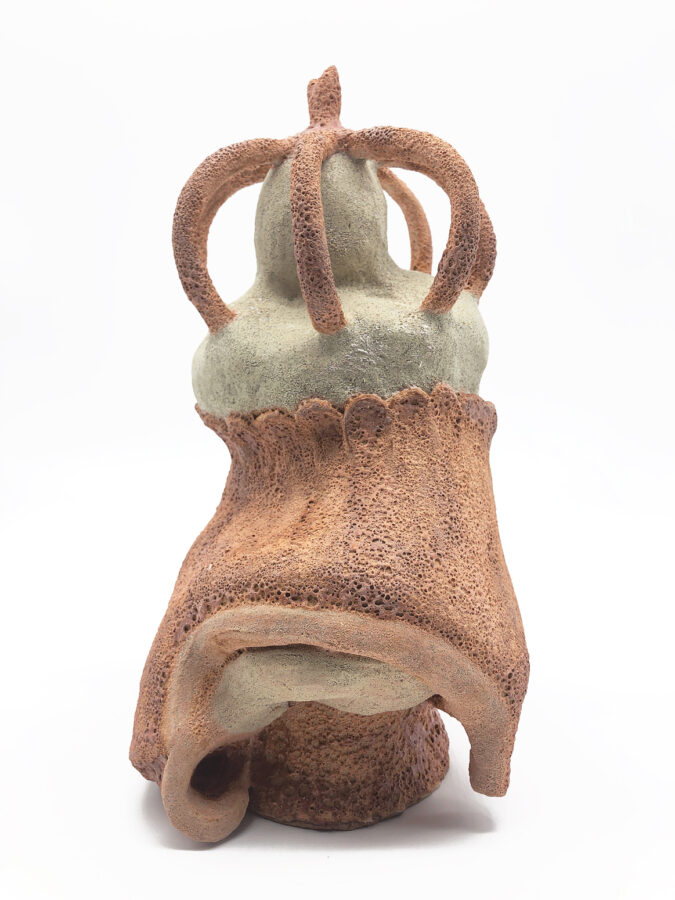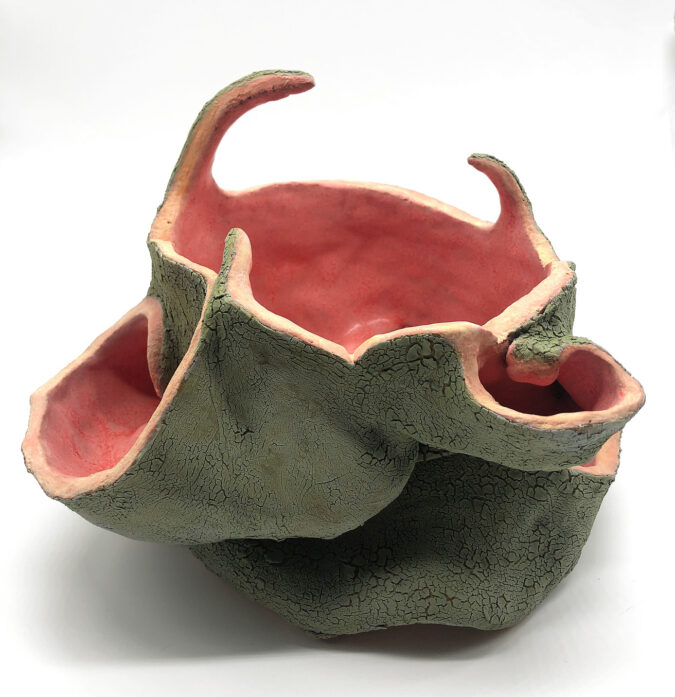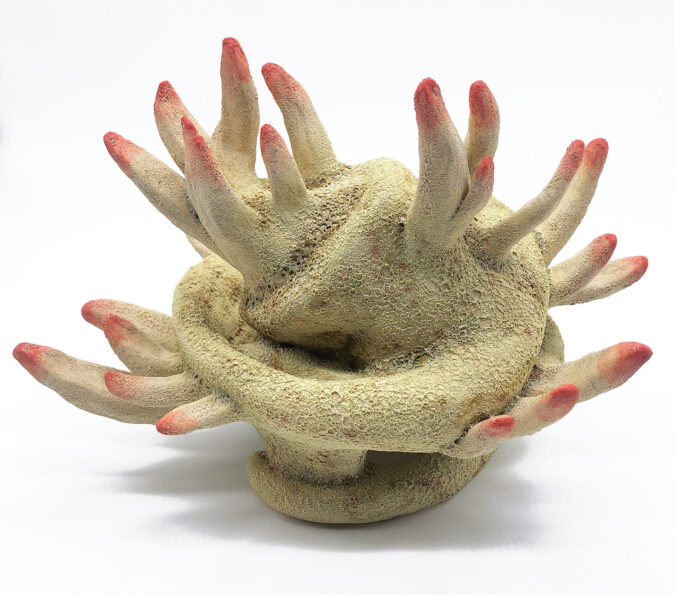Julie Evans
Julie Evans (b. 1959) is a native New Yorker who has been living and working upstate in Hudson, NY since 2011. In addition to her painting and drawing practice of 30 years, Evans recently began making ceramic sculpture in 2019. She has exhibited her work extensively in galleries and museums including Pamela Salisbury Gallery, Julie Saul Gallery, The Brattleboro Museum of Art, The Weatherspoon Art Museum, Wave Hill, Lesley Heller Workspace, Danese/Corey, Jeff Bailey Gallery, LABspace, Zurcher Gallery, The Dorsky Museum, Geoffrey Young Gallery, Daniel Weinberg Gallery, Esther Massry Gallery, and many others. Reviews of Evans’s work have appeared in The New York Times, ARTFORUM, Art In America, The New Yorker, Flash Art, TimeOutNY, New York Magazine, and many other publications. She is the recipient of a Fulbright Scholarship to India, as well as residency fellowships to MacDowell, Yaddo, Ucross, Millay, and Tamarind Institute. Evans’ work is included in over 300 international, public and private collections, including The Rubin Museum of Art, US Art in Embassies Program, Microsoft, Progressive Corporation, JP Morgan-Chase, and Pfizer Inc.
Question:
Your paintings often feel like a centrifugal force is spreading the compositional elements out and around the canvas or paper, arabesques curling in and curling out and reaching for the edges. In contrast the sculptures tend to be centered and singular. It is as if they are bodies separate and differentiated from the space around them. In the paintings the space is intertwined with the shapes. It can be hard to tell the solid from the atmosphere. I am curious about how you navigate the difference between the centrifugal paintings and the centripetal sculpture? Or is this a wrong-headed distinction?
Answer:
No, not wrong at all! That is a very distinct difference between my painted works and the new ceramic sculptures, and something I think about all the time. In my paintings, I tease forms out of poured pools of paint, and engage in a back and forth negotiation between what is “solid” form, and what is not. There is a dissolve in places where the atmosphere may take over, which can lead the eye or suggest a certain state. Or, there may be other related (or unrelated) forms in the paintings that suggest certain kinds of relationships or circumstances. So there is a confluence of elements that together create the image, (and meaning), not just a form alone.
My sculptures though are complete forms in and of themselves and lack the support that the grounds in my paintings can lend – compositionally, strategically, and contextually. I have to compress anything I may want to suggest into the singular form, with no assistance from the space that surrounds it. There is no implication of place or it’s condition. This difference changes everything and requires me to be more direct, more specific, and more finite in the work. I can not smudge something into a ghostly state, (suggesting character) or indicate where or how a form exists in space. Nor can I suggest if a “thing” is near or far, if it’s micro or macro, if its in light or darkness, etc. So working with the isolated forms themselves means they must be complete, discrete, and particular unto themselves.
I think this is what gave me so much trouble initially when it came to glazing the sculptures. I was not yet sure what kind of characters they were – humorous, mournful, fanciful, solemn, light or heavy hearted. While my paintings are full of rich, saturated color, I avoided color in my sculptures for about a year, using only shades of white or grey, focusing more on texture. I knew color would further define the forms I was making, but I wasn’t sure what direction that definition should lean towards.
I am still trying to figure out how to navigate this difference between my paintings and my sculptures. It’s like the difference between declaring something emphatically vs. suggesting something more quietly. That is what I’m trying to reconcile myself to – being more emphatic about something that is still undefinable.








